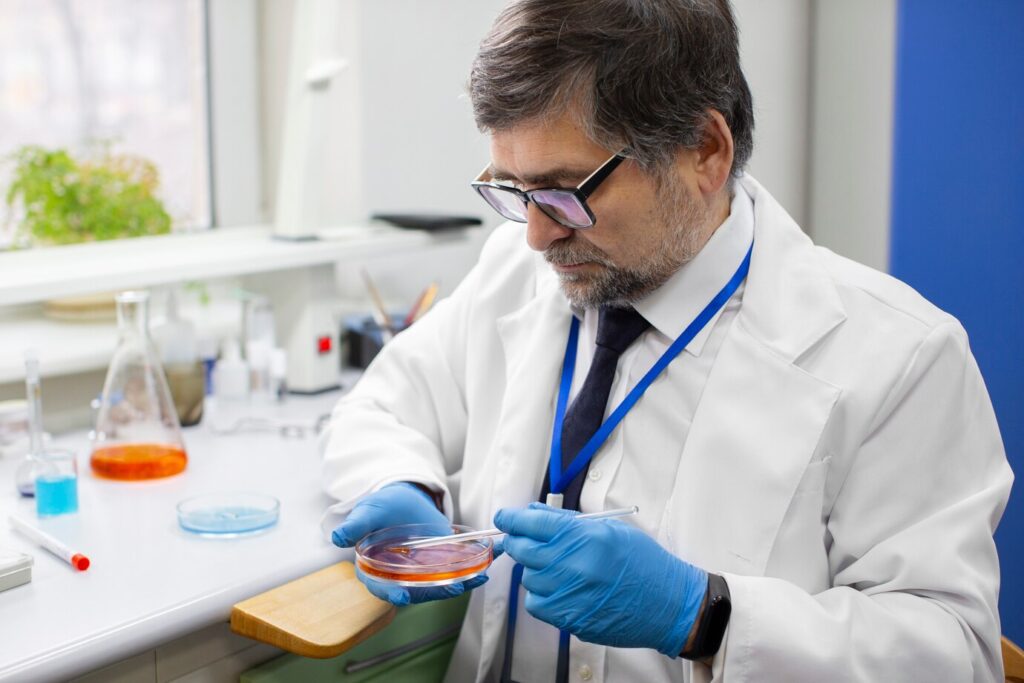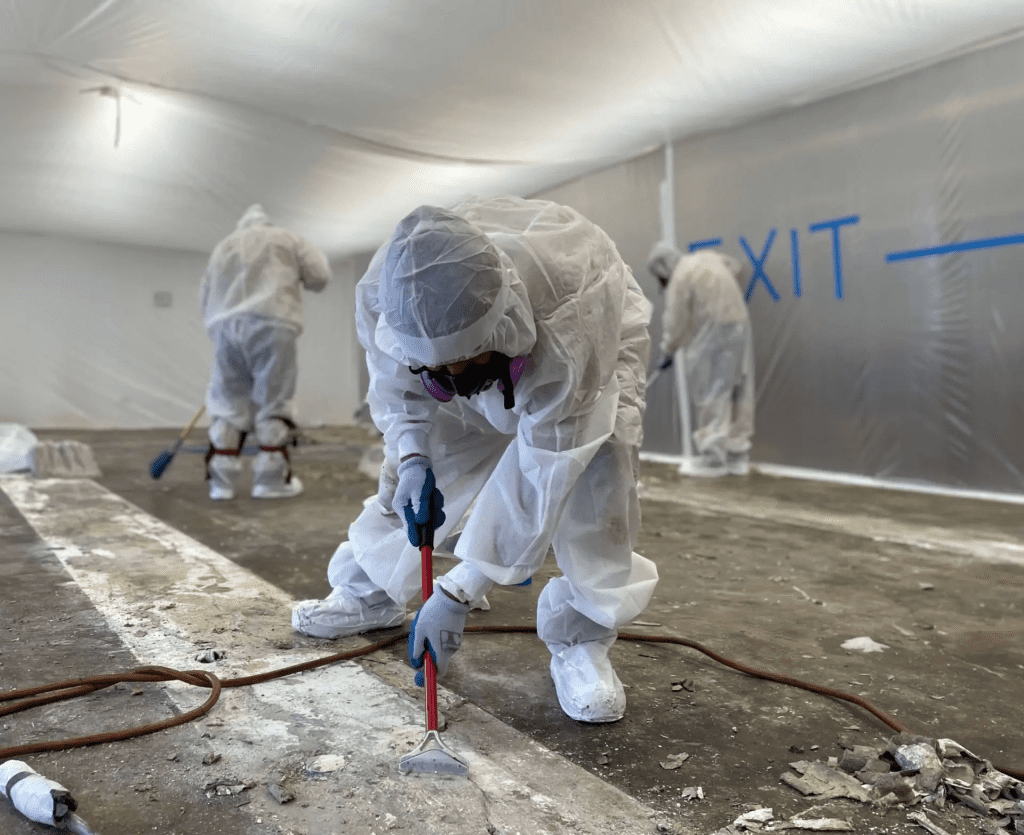Asbestos inspections in Long Island
Last month, a Nassau County homeowner spent three hours following an online DIY asbestos inspection guide, sampling materials from his 1960s ranch home. Two weeks later, he was rushed to the emergency room with severe respiratory distress. The “simple” inspection he thought would save him a few hundred dollars ended up costing him $15,000 in medical bills and months of recovery – and that’s just the beginning of his story.
This isn’t fear-mongering; it’s the reality of what happens when homeowners underestimate the complexity and danger of asbestos inspection. Across Long Island and throughout New York State, well-meaning homeowners are putting themselves and their families at serious risk by attempting DIY asbestos inspections based on incomplete online information and dangerous misconceptions.
The Allure of DIY: Why Homeowners Take the Risk
In our YouTube-driven culture, it’s tempting to believe that every home improvement task can be mastered with a few online tutorials and a trip to the hardware store. The internet is flooded with articles promising to teach you how to identify asbestos in your home, complete with grainy photos and oversimplified checklists. These resources tap into our natural desire to save money and take control of our living spaces.
For New York homeowners facing the reality of expensive professional asbestos inspections in Long Island, the DIY approach seems particularly appealing. When quotes for professional asbestos inspection in NY range from $300 to $800 or more, the promise of a “free” DIY inspection becomes irresistible. Add to this the common misconception that asbestos identification is simply a matter of looking at materials and checking their age, and you have a recipe for dangerous decision-making.
But here’s what those online guides don’t tell you: professional asbestos inspection isn’t expensive because contractors are greedy it’s expensive because it requires specialized training, equipment, and protocols that can mean the difference between life and death.
The Hidden Complexity of Asbestos Identification
The Microscopic Nature of the Problem
Asbestos isn’t something you can identify with the naked eye. The fibers that make asbestos dangerous are microscopic – often 1,200 times thinner than human hair. These fibers are invisible to the naked eye and can only be definitively identified through specialized laboratory analysis using polarized light microscopy or electron microscopy.
When DIY enthusiasts think they’re identifying asbestos by looking at insulation or ceiling texture, they’re actually making educated guesses based on appearance, age, and location. These guesses are frequently wrong, and the consequences of being wrong can be devastating.
The Deceptive Appearance of Asbestos-Containing Materials
One of the most dangerous aspects of DIY asbestos identification is that asbestos-containing materials often look identical to their non-asbestos counterparts. Consider these examples:
Pipe Insulation: Asbestos and non-asbestos pipe insulation can appear virtually identical. Both may be white, gray, or brown in color, and both may have similar textures and installation methods. The only way to know for certain is through laboratory analysis.
Ceiling Texture: Popcorn ceilings are notorious for potentially containing asbestos, but not all textured ceilings from the asbestos era actually contain the material. Conversely, some smooth-looking ceiling materials from the same period do contain asbestos. Visual inspection alone cannot make this determination.
Floor Tiles: Vinyl floor tiles may or may not contain asbestos, regardless of their appearance. The asbestos content was often in the backing material or adhesive, making visual identification impossible.
Roofing Materials: Asbestos cement shingles can look remarkably similar to modern fiber cement products. The difference is literally microscopic, but the health implications are enormous.
The Widespread Nature of Asbestos Use
Another complexity that DIY inspections fail to address is the sheer breadth of asbestos use in construction. Professional asbestos inspectors in New York are trained to identify dozens of potential asbestos-containing materials, including:
- Thermal system insulation
- Surfacing materials (plaster, joint compound)
- Flooring materials (tiles, sheet flooring, adhesives)
- Roofing materials (shingles, felt, flashing)
- Siding materials (cement panels, caulking)
- Fireproofing materials
- Acoustical materials
- Gaskets and packing materials
- Vermiculite insulation
- Boiler and furnace insulation
- Duct insulation and tape
- Decorative plaster
- Ceiling tiles
- Electrical components
- Automotive parts (brake pads, clutch facings)
A comprehensive professional asbestos inspection in NY considers all of these potential sources, while DIY attempts typically focus on only the most obvious suspects, missing many potential hazards.
The Sampling Nightmare: Why DIY Collection is Dangerous
The Fiber Release Problem
The most dangerous aspect of DIY asbestos inspection is the sampling process itself. When asbestos-containing materials are disturbed – even for the purpose of taking a small sample – they can release millions of microscopic fibers into the air. These fibers can remain airborne for hours or even days, contaminating your entire home.
Professional asbestos inspectors use specialized containment procedures, including:
- Negative air pressure systems
- Plastic sheeting barriers
- HEPA filtration equipment
- Specialized sampling tools
- Personal protective equipment rated for asbestos exposure
DIY samplers typically use none of these precautions, turning a simple inspection into a major contamination event.
The Cross-Contamination Risk
When untrained individuals collect samples from multiple locations in a home, they risk cross-contaminating areas that were previously asbestos-free. Tools, clothing, and hands can carry asbestos fibers from one location to another, spreading contamination throughout the home.
Professional inspectors follow strict protocols to prevent cross-contamination, including:
- Changing protective equipment between samples
- Using separate tools for each sample location
- Following decontamination procedures
- Properly containing all sample materials
The Inadequate Sample Size Problem
Even if DIY inspectors manage to collect samples without major contamination, they often collect inadequate samples for proper analysis. Professional sampling requires specific techniques to ensure that samples are representative of the bulk material and large enough for accurate laboratory analysis.
Inadequate samples can lead to false negative results, giving homeowners a dangerous false sense of security. A professional asbestos inspection in NY includes training on proper sampling techniques that ensure accurate results.
The Laboratory Analysis Limitation

The Chain of Custody Issue
Professional asbestos inspections in Long Island include proper chain of custody documentation, ensuring that samples are properly tracked from collection to analysis. This documentation is crucial for legal purposes and ensures that results can be trusted.
DIY inspectors often lack understanding of proper chain of custody procedures, leading to potentially invalid results that cannot be relied upon for legal or health purposes.
The Accreditation Problem
Not all laboratories are qualified to perform asbestos analysis. Professional asbestos inspectors in New York work with accredited laboratories that meet strict quality standards and participate in proficiency testing programs.
DIY inspectors may send samples to unaccredited laboratories or use mail-in testing services that lack proper quality controls, leading to unreliable results.
The Interpretation Challenge
Even when laboratory results are accurate, interpreting them requires specialized knowledge. Professional asbestos inspectors understand the nuances of laboratory reports, including:
- Detection limits and their implications
- The difference between chrysotile, amosite, and crocidolite asbestos
- Quantitative vs. qualitative analysis
- The significance of trace amounts
- When additional testing may be needed
DIY inspectors often lack this expertise, leading to misinterpretation of results and inappropriate response decisions.
The Legal and Regulatory Nightmare
New York State Requirements
New York State has specific requirements for asbestos inspections, particularly when they’re conducted in preparation for renovation or demolition work. These requirements include:
- Inspector certification and licensing
- Specific sampling and analysis protocols
- Detailed reporting requirements
- Notification procedures for certain types of work
DIY inspections typically fail to meet these requirements, potentially leading to legal violations and liability issues.
The Liability Exposure
When homeowners conduct DIY asbestos inspections, they assume significant legal liability. If their inspection is inadequate and exposes family members, workers, or neighbors to asbestos, they may face:
- Personal injury lawsuits
- Regulatory violations and fines
- Insurance coverage exclusions
- Property value impacts
- Cleanup and remediation costs
Professional asbestos inspectors carry specialized insurance and are trained to follow protocols that minimize liability exposure.
The Documentation Problem
Professional asbestos inspections in Long Island include detailed documentation that can be used for:
- Legal compliance
- Insurance claims
- Property sales
- Renovation planning
- Future reference
DIY inspections typically lack this documentation, creating problems when professional records are needed.
The Health Consequences: Why the Stakes Are So High
Understanding Asbestos Related Diseases
Asbestos exposure can cause several serious diseases, including:
Mesothelioma: A rare but aggressive cancer that affects the lining of the lungs, abdomen, or heart. This cancer is almost exclusively caused by asbestos exposure and has a very poor prognosis.
Lung Cancer: Asbestos exposure significantly increases the risk of lung cancer, particularly in combination with smoking.
Asbestosis: A chronic lung condition caused by the inhalation of asbestos fibers, leading to scarring of lung tissue and breathing difficulties.
Pleural Disease: Non-malignant conditions affecting the lining of the lungs, including pleural plaques and pleural effusions.
The Latency Period Problem
One of the most insidious aspects of asbestos-related diseases is their long latency period. Symptoms may not appear for 20 to 50 years after exposure, making it difficult to connect health problems to specific exposure events.
This latency period means that a DIY inspection conducted today could lead to serious health consequences decades in the future, when the connection between the exposure and the disease may be difficult to establish.
The Cumulative Effect
Asbestos exposure is cumulative, meaning that each exposure adds to your total lifetime risk. Even a single DIY inspection can contribute to this cumulative exposure, particularly if proper precautions are not taken.
The Family Impact
When homeowners conduct DIY asbestos inspections, they don’t just put themselves at risk – they put their entire families at risk. Asbestos fibers can be carried on clothing, shoes, and tools, exposing family members who weren’t even present during the inspection.
Children are particularly vulnerable to asbestos exposure, as their developing respiratory systems are more susceptible to damage from inhaled fibers.
The Equipment and Training Gap
Specialized Equipment Requirements
Professional asbestos inspectors use specialized equipment that is not readily available to consumers, including:
Air Monitoring Equipment: Professional-grade air pumps and cassettes for collecting air samples to determine if asbestos fibers are present in the breathing zone.
Microscopy Equipment: High-powered microscopes with polarized light capabilities for preliminary fiber identification.
Sampling Tools: Specialized tools designed to collect representative samples while minimizing fiber release.
Containment Equipment: Plastic sheeting, negative air machines, and HEPA filtration systems for containing work areas.
Personal Protective Equipment: Properly fitted respirators, disposable coveralls, and other protective gear designed for asbestos work.
The Training Requirements
Professional asbestos inspectors in New York must complete extensive training programs that cover:
- Asbestos identification and assessment
- Sampling techniques and protocols
- Safety procedures and personal protection
- Regulatory requirements and compliance
- Report writing and documentation
- Emergency response procedures
This training is typically followed by certification examinations and ongoing continuing education requirements. DIY inspectors lack this comprehensive training, making them ill-equipped to conduct safe and effective inspections.
The Experience Factor
Even with proper training, asbestos inspection requires experience to be effective. Professional inspectors develop expertise through years of fieldwork, learning to identify subtle signs of asbestos-containing materials and unusual installation methods.
This experience cannot be replicated through online tutorials or home improvement guides, making professional asbestos inspection in NY essential for accurate and safe assessment.
The False Economy of DIY Inspection
The Hidden Costs
While DIY asbestos inspection may seem like a cost-saving measure, the hidden costs can be substantial:
Medical Costs: Exposure to asbestos during DIY inspection can lead to expensive medical monitoring and treatment costs that far exceed the cost of professional inspection.
Remediation Costs: If DIY inspection leads to contamination, professional remediation may be required, costing thousands of dollars more than the original inspection would have cost.
Legal Costs: Liability issues arising from inadequate DIY inspections can result in expensive legal proceedings and settlements.
Property Value Impact: Homes with known or suspected asbestos problems may experience significant decreases in property value.
The Reliability Problem
DIY inspections often produce unreliable results, leading to:
- False negatives that miss dangerous asbestos-containing materials
- False positives that lead to unnecessary remediation costs
- Incomplete assessments that leave homeowners vulnerable
- Inadequate documentation that cannot be relied upon for legal purposes
When DIY inspections produce unreliable results, homeowners often end up paying for professional inspections anyway, doubling their costs while potentially exposing themselves to unnecessary risk.
The Time and Effort Investment
Conducting a thorough DIY asbestos inspection requires significant time and effort, including:
- Researching inspection protocols and techniques
- Purchasing or renting specialized equipment
- Learning proper sampling procedures
- Coordinating laboratory analysis
- Interpreting results and developing response plans
For most homeowners, this time investment far exceeds the cost savings compared to professional inspection.
The Professional Alternative: What You Get for Your Investment
Comprehensive Assessment
Professional asbestos inspections in Long Island provide comprehensive assessments that include:
- Visual inspection of all accessible areas
- Identification of all potential asbestos-containing materials
- Representative sampling of suspected materials
- Air quality testing when appropriate
- Detailed reporting with photographs and recommendations
- Compliance with all regulatory requirements
Specialized Expertise
Professional asbestos inspectors bring specialized expertise that includes:
- Extensive training in asbestos identification and assessment
- Experience with a wide variety of building materials and construction methods
- Knowledge of regulatory requirements and compliance issues
- Understanding of health risks and exposure pathways
- Ability to develop appropriate response recommendations
Quality Assurance
Professional inspections include quality assurance measures such as:
- Accredited laboratory analysis
- Chain of custody documentation
- Peer review of sampling and analysis protocols
- Compliance with industry standards and best practices
- Professional liability insurance coverage
Peace of Mind
Perhaps most importantly, professional asbestos inspection in NY provides peace of mind that comes from knowing that:
- The inspection was conducted safely and properly
- All potential asbestos-containing materials were identified and assessed
- Results are reliable and can be trusted for decision-making
- All regulatory requirements have been met
- Your family’s health has been protected throughout the process
Common DIY Inspection Mistakes and Their Consequences
Mistake #1: Inadequate Personal Protection
What Happens: DIY inspectors often use inadequate personal protective equipment, such as basic dust masks instead of properly fitted respirators rated for asbestos exposure.
Consequences: Inadequate protection can lead to significant asbestos exposure during the inspection process, potentially causing serious health problems years later.
Mistake #2: Improper Sampling Techniques
What Happens: DIY inspectors often use improper sampling techniques, such as breaking or crushing materials to collect samples, which can release large quantities of asbestos fibers.
Consequences: Improper sampling can contaminate the entire home with asbestos fibers, requiring expensive professional remediation.
Mistake #3: Incomplete Material Assessment
What Happens: DIY inspectors typically focus on obvious suspects like pipe insulation and ceiling texture, missing many other potential asbestos-containing materials.
Consequences: Incomplete assessments leave homeowners vulnerable to exposure from unidentified asbestos-containing materials.
Mistake #4: Misinterpretation of Results
What Happens: DIY inspectors often misinterpret laboratory results, either overreacting to trace amounts of asbestos or underestimating the significance of positive results.
Consequences: Misinterpretation can lead to inappropriate response decisions, either causing unnecessary expense or failing to address real hazards.
Mistake #5: Lack of Documentation
What Happens: DIY inspections often lack proper documentation, including photographs, sample locations, and chain of custody records.
Consequences: Inadequate documentation can create problems for future property sales, insurance claims, or legal proceedings.
The Regulatory Landscape in New York

State-Level Requirements
New York State has comprehensive regulations governing asbestos inspections, including:
- Licensing requirements for asbestos inspectors
- Specific protocols for sampling and analysis
- Reporting requirements for inspection results
- Notification procedures for certain types of work
- Penalties for violations of asbestos regulations
Federal Oversight
Federal agencies, including the EPA and OSHA, also have jurisdiction over asbestos-related activities, with regulations covering:
- Worker protection standards
- Waste disposal requirements
- Notification and reporting procedures
- Training and certification requirements
Local Considerations
Many Long Island municipalities have additional requirements or restrictions related to asbestos inspections, particularly for work conducted in preparation for renovation or demolition projects.
Making the Right Choice: Professional Inspection
Selecting a Qualified Inspector
When choosing professional asbestos inspections in Long Island, look for:
- Proper New York State licensing and certification
- Experience with residential properties
- Accredited laboratory relationships
- Comprehensive insurance coverage
- Positive references from recent clients
- Transparent pricing and detailed proposals
Understanding the Process
Professional asbestos inspection typically involves:
- Initial Consultation: Discussion of your concerns and inspection goals
- Visual Assessment: Comprehensive inspection of all accessible areas
- Sampling: Collection of representative samples using proper containment procedures
- Laboratory Analysis: Analysis by accredited laboratories using appropriate methods
- Reporting: Detailed written report with findings and recommendations
- Follow-up: Discussion of results and next steps
Preparing for Professional Inspection
To prepare for professional asbestos inspection in NY:
- Provide access to all areas of the home
- Share any known history of asbestos-containing materials
- Discuss any planned renovation or demolition work
- Ask questions about the inspection process and reporting
- Understand the timeline for results and recommendations
The Bottom Line: Your Health Is Worth the Investment
The temptation to conduct DIY asbestos inspection is understandable, but the risks far outweigh any potential benefits. Professional asbestos inspections in Long Island provide:
- Safe and proper assessment procedures
- Reliable and accurate results
- Comprehensive documentation
- Regulatory compliance
- Peace of mind for you and your family
The cost of professional inspection is minimal compared to the potential consequences of inadequate DIY assessment. When you consider the health risks, legal liability, and potential for costly mistakes, professional asbestos inspection in NY is not just the safer choice – it’s the only responsible choice.
Taking Action: Your Next Steps
If you’re considering asbestos inspection for your home, take these steps:
- Avoid DIY Temptation: Resist the urge to conduct your own inspection, regardless of online tutorials or guides you may find.
- Research Qualified Professionals: Look for licensed and experienced asbestos inspectors serving your area.
- Get Multiple Quotes: Compare proposals from several qualified inspectors to ensure you’re getting comprehensive service at a fair price.
- Ask Questions: Don’t hesitate to ask about credentials, procedures, and reporting methods.
- Schedule Promptly: Don’t delay inspection if you have concerns about asbestos in your home.
Conclusion: The Choice Is Clear
In our DIY culture, it’s natural to want to handle home inspections yourself. But when it comes to asbestos, the stakes are simply too high. The complexity of proper identification, the dangers of improper sampling, and the long-term health consequences of exposure make professional asbestos inspection in NY not just advisable – it’s essential.
The homeowner mentioned at the beginning of this article learned this lesson the hard way. His “simple” DIY inspection turned into a nightmare of medical bills, family health scares, and expensive professional remediation. But his story doesn’t have to be yours.
Professional asbestos inspections in Long Island are conducted by trained experts who understand the complexities and dangers involved. They have the equipment, training, and experience necessary to protect your family’s health while providing accurate, reliable results you can trust.
The choice between DIY and professional inspection isn’t really about cost – it’s about values. Do you value your family’s health and safety enough to invest in proper professional assessment? For most homeowners, the answer is a resounding yes.
Don’t let the allure of DIY savings put your family at risk. When it comes to asbestos inspection, the professional route isn’t just the safer choice – it’s the only choice that makes sense. Your family’s health is worth far more than the cost of professional inspection, and their safety should never be compromised by false economy.
Contact qualified asbestos inspection professionals in your area today. Your family’s future health depends on the choices you make right now.




